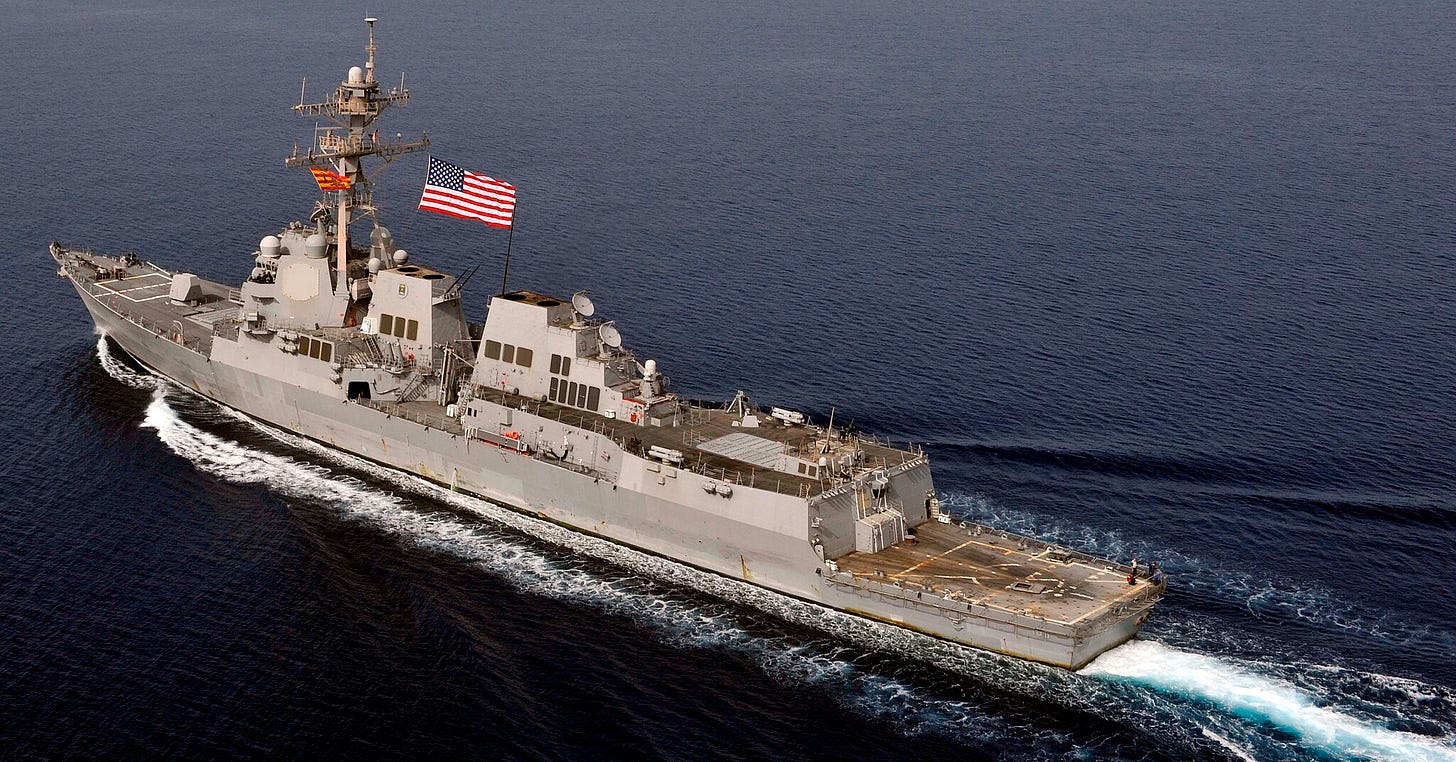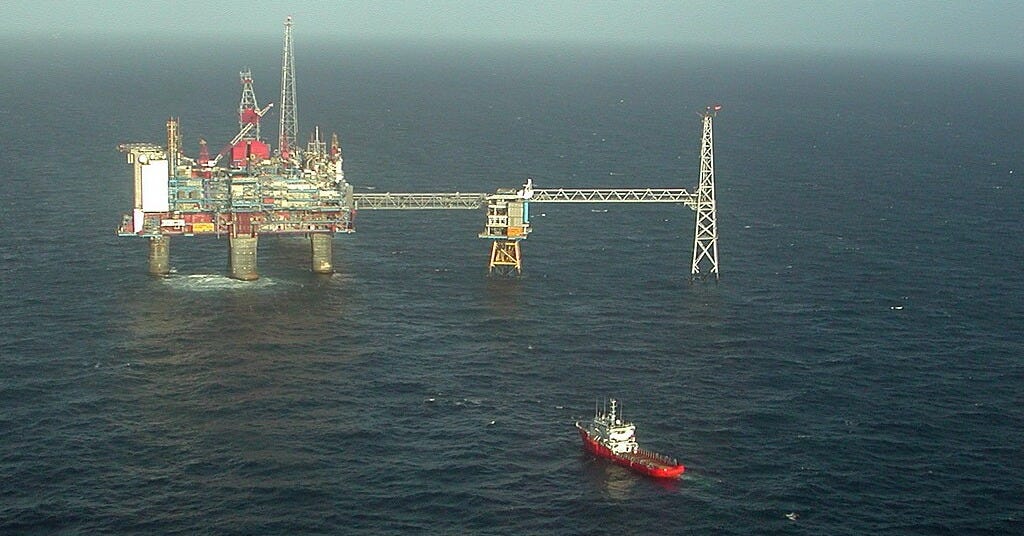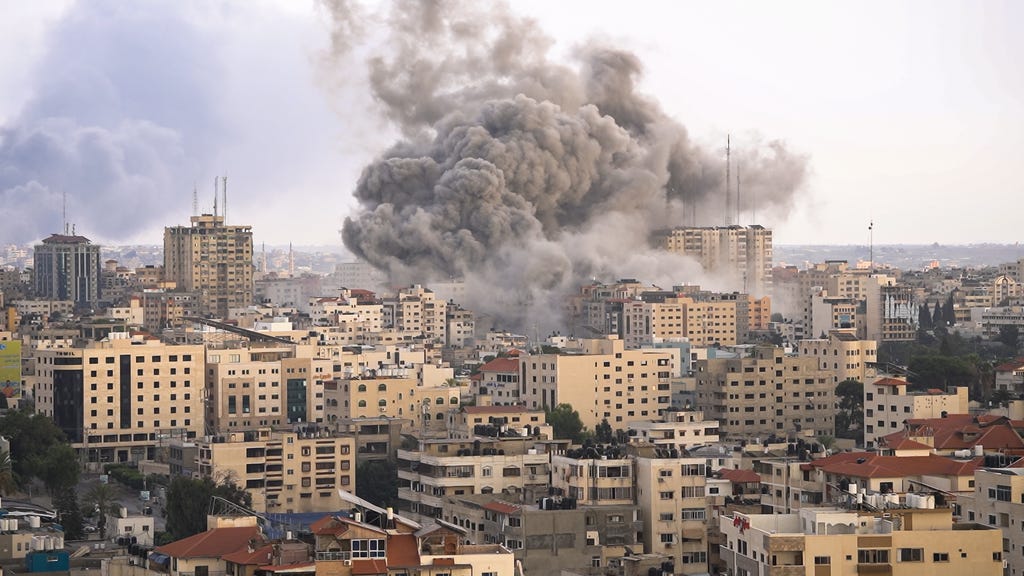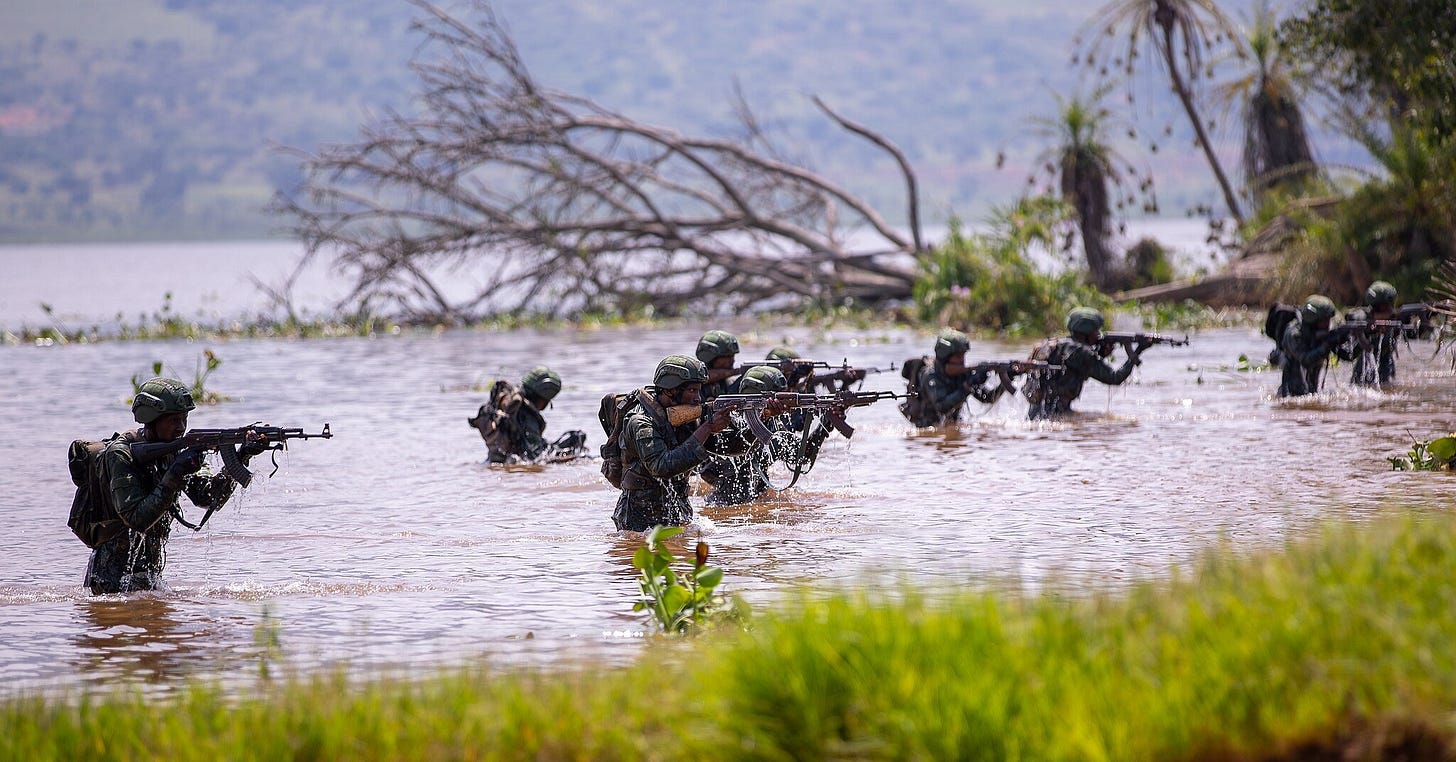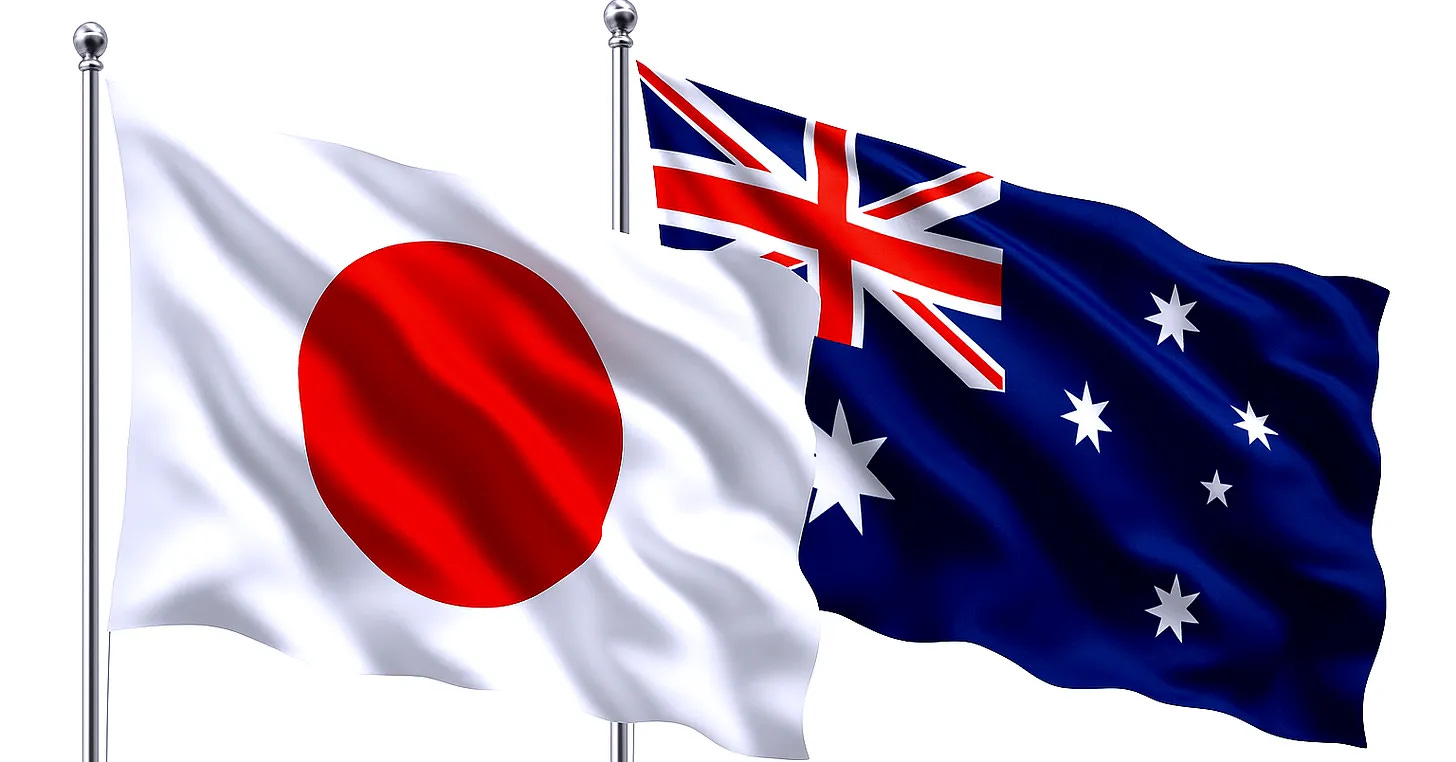From the Caribbean to the Congo: Geopolitics on Edge
Five simmering crises reveal how fragile the global order has become in September 2025.
Americas: Military Brinkmanship Tests Caribbean Stability
US-Venezuela tensions escalate to dangerous aerial provocations after deadly vessel strike.
The Caribbean has become a powder keg as Venezuelan military aircraft conducted “highly provocative” maneuvers near the USS Jason Dunham, days after US forces destroyed an alleged drug vessel, killing eleven. Washington has deployed eight warships including three destroyers and 4,500 military personnel to the region in what officials frame as enhanced counter-narcotics operations.
Image: The guided missile destroyer USS Jason Dunham
President Trump authorized potential shoot-downs of hostile aircraft, while Venezuela’s Nicolás Maduro mobilized 4.5 million militiamen, denouncing “the greatest threat our continent has seen in the last 100 years.” Maduro warned he was ready to “declare a republic in arms” if US forces attack Venezuela.
The crisis transcends narcotics enforcement. The US recently doubled the bounty on Maduro to $50 million, while deploying what Venezuelan UN Ambassador Samuel Moncada called a “massive propaganda operation to justify kinetic action.” Regional analysts warn this represents a classic case of coercive diplomacy where “the line between signaling and all-out war is perilously thin.”
For Caribbean states caught between Washington’s pressure and Caracas’s defiance, the escalation forces impossible choices. The crisis evokes the Cuban Missile Crisis’s dangerous precedent of great power competition in America’s maritime backyard.
Our Take: The Caribbean standoff shows how quickly law enforcement operations can mutate into military crises. Venezuela’s aerial provocations and Trump’s shoot-down authorization create a dangerous escalation spiral where neither side can back down without losing face.
Europe: Norwegian Election Tests Energy Diplomacy Balance
September 8 vote could reshape Europe’s energy future and climate commitments.
Norway heads to polls on September 8 following political upheaval after the Centre Party departed the governing coalition in January over disagreements on EU energy policy, creating the first single-party government in 25 years. The return of former NATO chief Jens Stoltenberg as finance minister has provided a “Stoltenberg effect,” boosting Labour’s polling by 10 points.
Image: Sleipner oil field, North Sea, Norway by Bair175, licensed under CC BY-SA 3.0.
As Europe’s largest gas supplier since Russia’s invasion of Ukraine, Norway’s political direction carries continental implications. The Socialist Left Party demands an end to new oil licensing and comprehensive fossil fuel phase-out, while the Centre Party supports continued exploration. Energy prices have spiked across Norway due to integration with Europe-wide markets and increased continental demand for Norwegian resources.
The election occurs as polling shows nine parties could enter parliament, with the Progress Party at 22%—nearly double their 2021 result—and Labour potentially leading a complex coalition. Control over the $1.7 trillion sovereign wealth fund could reshape debates about Nordic investments, including Socialist Left calls to divest from companies linked to Israel’s Gaza actions.
Norway embodies the global paradox of powering today’s economies while investing in tomorrow’s climate. September 8 will determine whether Oslo leads the post-carbon transition or prioritizes short-term energy security.
Our Take: Norway’s election will determine whether Europe’s energy giant leads climate transition or prioritizes short-term security. The outcome could reshape continental energy policy and set precedents for how sovereign wealth funds drive climate diplomacy.
Middle East: Egypt-Israel Tensions Threaten Camp David Framework
Gaza buffer zone disputes fracture longtime peace partners.
Israel has expanded buffer zones inside Gaza, shrinking Palestinian-accessible territory by more than half, with soldiers systematically destroying civilian infrastructure within a kilometer of the Israeli border. Israel’s southern Gaza buffer zone now stretches from the Egypt border to Khan Younis—encompassing the entire city of Rafah and representing 20% of the Gaza Strip.
Image: Israeli airstrike on Gaza Strip during Gaza War 23-25, by Jaber Jehad Badwan, licensed under CC BY-4.0
Tensions have escalated between Israel and Egypt over military activities in Egypt’s Sinai Peninsula, deepened by President Trump’s suggestion that Palestinians from Gaza move into Egypt—a proposal Cairo has rejected. Israel has informed Arab states including Egypt, Jordan, and the UAE of its plans for permanent buffer zones as part of postwar Gaza arrangements.
The dispute threatens the 1979 Camp David Accords’ foundation. Egypt fears mass displacement into Sinai could destabilize a region already plagued by insurgency, while Israel maintains buffer zones are essential for preventing future October 7-style attacks. Israel ceased humanitarian aid entry to Gaza in March 2025, with Defense Minister Israel Katz stating “no humanitarian aid will enter Gaza” as a pressure lever against Hamas.
This fracture between longtime peace partners occurs as regional coordination remains vital for Gaza’s future. Egypt’s public objection signals new red lines that could embolden outside powers to test the post-Camp David order.
Our Take: Egypt-Israel tensions over Gaza reveal how even the most durable peace frameworks can fracture under new pressures. Cairo’s public objections signal new red lines that could unravel decades of regional stability.
Africa: Congo Peace Agreements Mask Continuing Violence
Multiple peace deals fail to stop killings in mineral-rich eastern regions.
Despite the June 27 Washington peace agreement between DRC and Rwanda and the July 19 Doha declaration between DRC and M23 rebels, violence has persisted in eastern Congo. Human Rights Watch documented M23 rebels killing 141 villagers in July, targeting mostly ethnic Hutu communities between July 10-30.
Image: Rwanda Defense Force soldiers
M23’s January capture of Goma killed between 900-2,000 people, while the group still controls strategic territory including mineral-rich areas and cross-border trade routes. Despite diplomatic progress, UN Assistant Secretary General Martha Ama Akyaa Pobee noted in August that “the evolution of the security situation on the ground has not matched the progress achieved on the diplomatic front.”
The crisis reflects deeper structural problems. Land disputes, mineral interests, and foreign intervention drive violence in a region where the DRC is the world’s leading producer of cobalt and tantalum, essential for batteries and electronics. Rwanda maintains 3,000-4,000 troops supporting M23, while multiple armed groups compete for territory and resources.
As the Council on Foreign Relations notes, “scores of armed groups operate in the region, and the notion that command and control leads back to Kinshasa or Kigali is fanciful.” Land remains the axis of identity, wealth, and survival—making peace agreements fragile without addressing material realities on the ground.
Our Take: Congo’s multiple peace agreements mask the reality that documents cannot resolve conflicts rooted in land, resources, and survival. Without addressing material realities on the ground, diplomatic theater will continue while civilians pay the price.
Asia-Pacific: Japan-Australia Partnership Signals Regional Militarization
A$10 billion warship deal reflects Indo-Pacific security transformation.
Australia and Japan struck their largest defense agreement ever on August 5, with Australia purchasing 11 Mogami-class frigates worth A$10 billion from Mitsubishi Heavy Industries. The upgraded stealth frigates feature 32 vertical launch cells capable of firing Tomahawk cruise missiles with 1,000-mile range, extending Australia’s strike capabilities significantly.
The September 5 Japan-Australia 2+2 ministerial meeting in Tokyo deepened security cooperation, with both nations agreeing to enhance joint deterrence capabilities amid China’s growing assertiveness. Japan’s government spokesman called the deal “proof of trust in our nation’s high-level technology” and Japan’s largest defense export since 1945 with a non-US partner.
The partnership reflects broader regional realignments. Australia faces growing neighborhood rivalry with China, highlighted by Chinese naval forces circumnavigating the continent and conducting live-fire exercises off Australian shores earlier this year. Both nations are Quad members alongside India and the US, representing deepening security cooperation among Indo-Pacific democracies.
Australia plans to increase defense spending to 2.4% of GDP and expand its major warship fleet from 11 to 26 over the next decade. The Japan-Australia partnership exemplifies how trade relationships are being overlaid with security considerations as regional states hedge against overreliance on any single power.
Our Take: The Japan-Australia partnership reflects the Indo-Pacific’s evolution from a trade-focused to security-defined region. What began as economic cooperation is now becoming military preparation for potential conflict with China.

